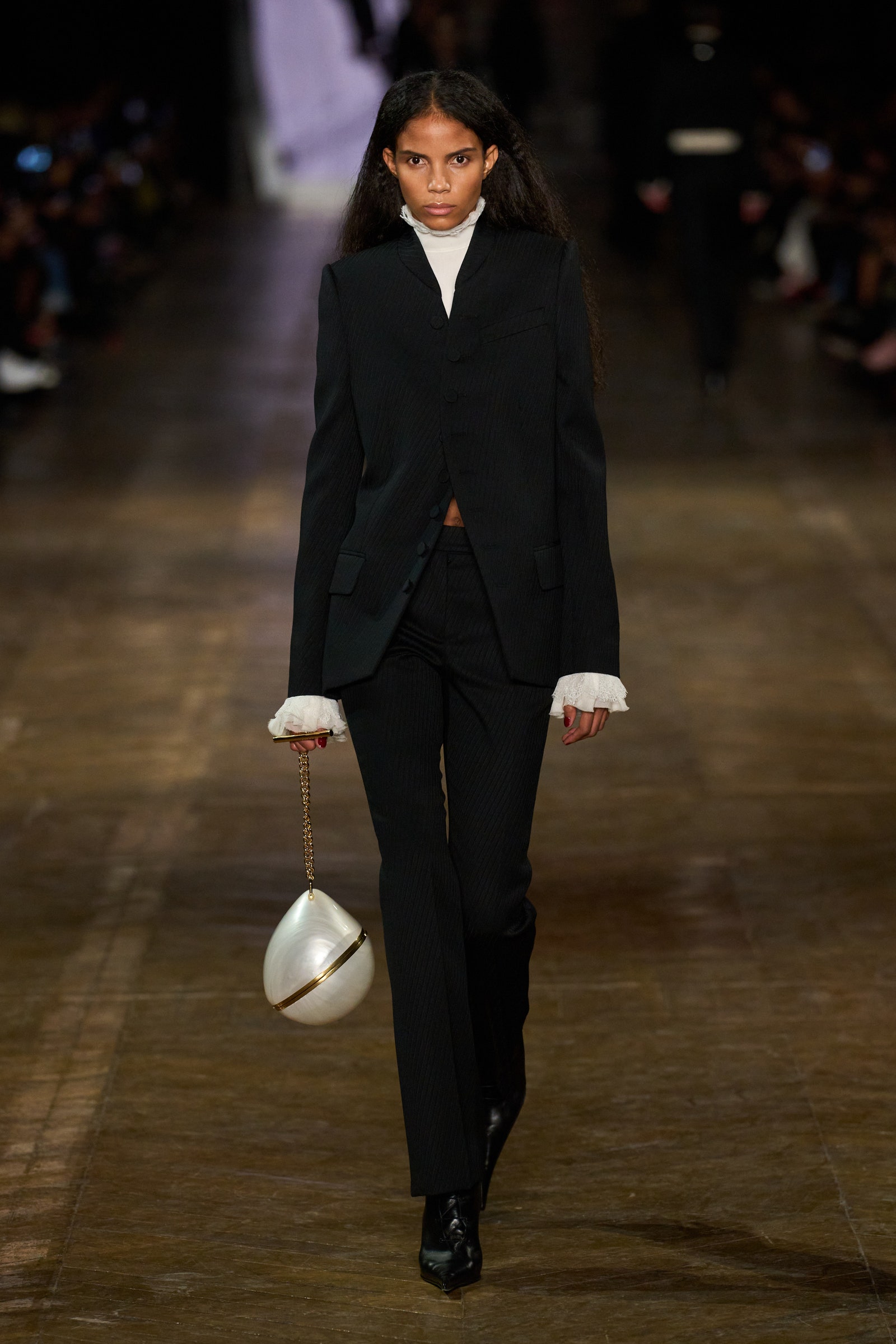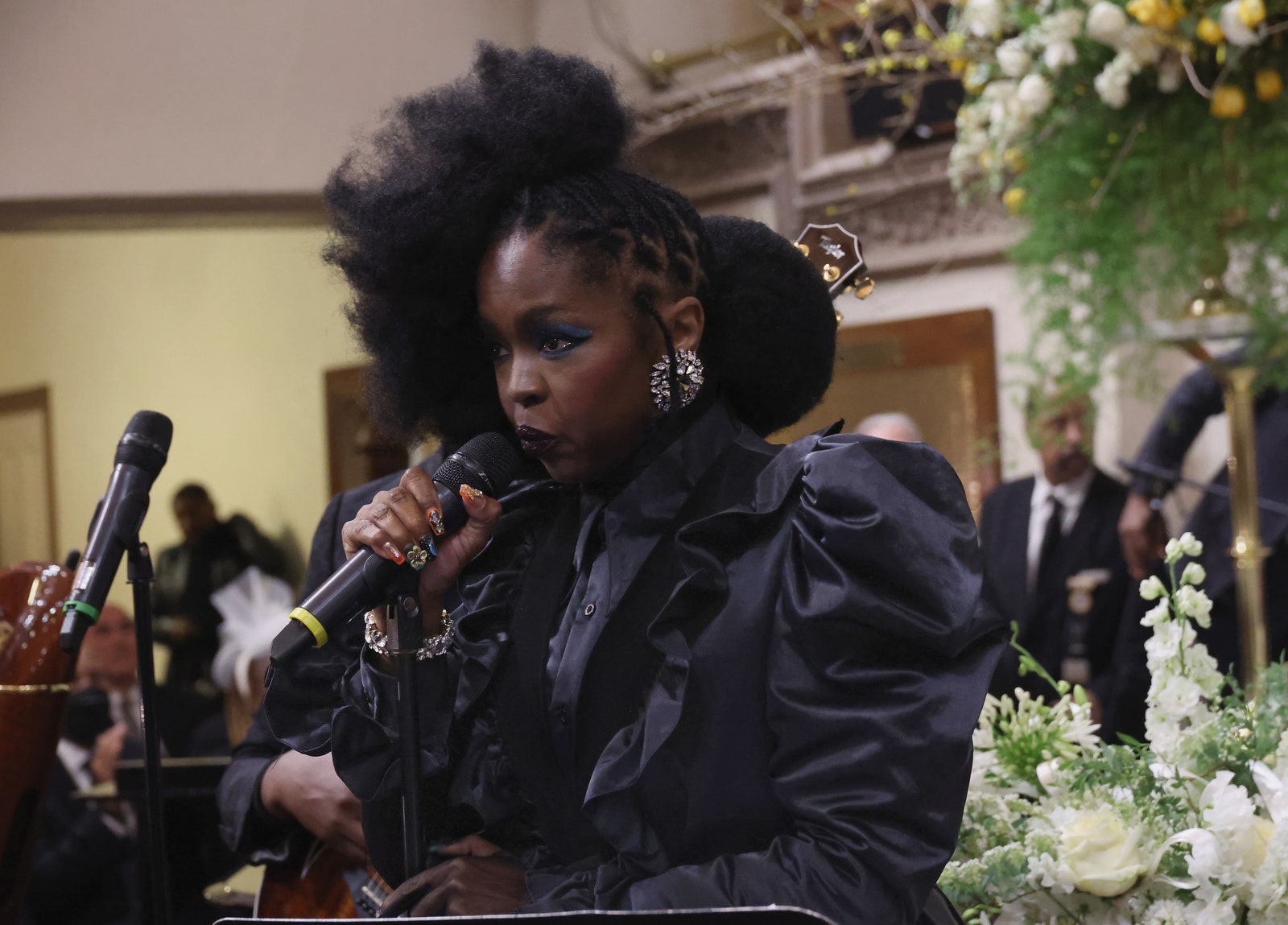Introducing Addressed, a weekly column where we’ll, ahem, address the joys (and tribulations!) of getting dressed. We’ll look at runway trends, real-life trends, talk to people whose style we love, and most importantly, answer your own fashion queries. Download the Vogue App and find our Style Chat section to submit your question.
A Vogue Editor Asks: What should I wear to my stepfather’s funeral? Can I wear florals if the background is black? My mom wore dark green to my father’s funeral and plans to wear navy to my stepfather’s but black does feel like the name of the game. Are dark tones ok? Brown, burgundy, gray or should I stick to black or navy?
What to wear at a funeral can be a tricky proposition—especially for people who do not favor a mostly dark wardrobe in their everyday life. Although the tradition of wearing black as a symbol of mourning is often credited to Queen Victoria, who famously dressed in the dark shade for 40 years following the death of her husband, Prince Albert; the practice can be traced back to Roman times, where men wore dark-colored togas to mourn their dead. Interestingly, in other cultures, white is the preferred color for mourning as a symbol of peace and purity.
These days the point of wearing all-black—or yes, dark tones to answer your question—beyond its attached meaning, is really to not call attention to oneself. The general rule is simple: stick to black or dark navy only in demure silhouettes—no body con, deep décolletages, low backs, high slits, or sheer fabric. I would venture to add that dark charcoal grays are ok, while lighter tones like silvers or greiges are not. As red is an absolute funeral don’t, I would steer clear from burgundy and even warmer shades of brown.
Another fact to consider when getting dressed for a funeral is your relationship to the person being mourned. If it’s a very close family member or loved one, for example, you can less strictly adhere to these rules—like how Naomi Campbell wore a fabulous Schiaparelli white suit and fur to attend the funeral of her friend André Leon Talley. If you sometimes dress-up to see your friends in something you know they’ll appreciate, why not do it in absentia as well? In that instance, a wider color palette or a print can easily be incorporated, especially if it’s something meaningful that you shared with this person. Beyond the color palette, the thing about prints is that you have to gauge whether the pattern “feels cheerful,” which can be a highly subjective exercise to undertake at a sensitive time.
Lastly, it is important to consider the nature of the event itself: Something spoken about as “a celebration of life,” for example, can be a call to let more of your personality show through or even wear something that pays homage to the deceased’s own particular style. At a special memorial for the photographer Bill Cunningham, attendees dressed in their Sunday best “for Bill.” On the other hand, if you know the funeral will be primarily attended by very conservative people who could easily take offense to an otherwise appropriate floral print or non-black color choice, then your best bet might just be to head to the nearest Zara and buy a suitable black dress—knee-length and if sleeveless then not with spaghetti strap. Won’t wear the dress again? No problem. This is also the best solution if you do not want to have something in your wardrobe that will forever remind you of attending a funeral; buy something inexpensive, then donate or give it away. Think of it this way, what matters the most at a funeral is seeing family and community coming together to remember a loved one. You can save your star ’fits for another time.

















